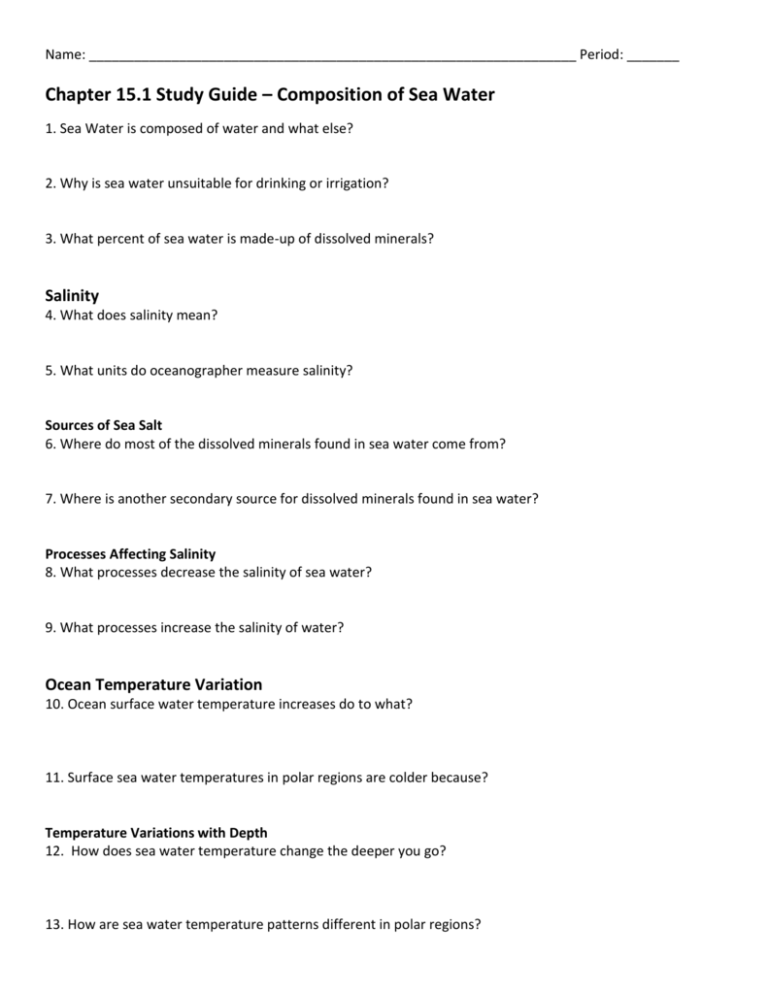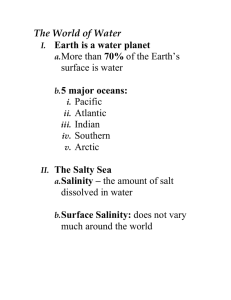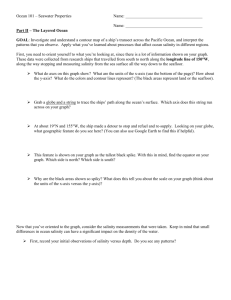Chapter 15.1 Study Guide – Composition of Sea Water
advertisement

Name: _________________________________________________________________ Period: _______ Chapter 15.1 Study Guide – Composition of Sea Water 1. Sea Water is composed of water and what else? 2. Why is sea water unsuitable for drinking or irrigation? 3. What percent of sea water is made-up of dissolved minerals? Salinity 4. What does salinity mean? 5. What units do oceanographer measure salinity? Sources of Sea Salt 6. Where do most of the dissolved minerals found in sea water come from? 7. Where is another secondary source for dissolved minerals found in sea water? Processes Affecting Salinity 8. What processes decrease the salinity of sea water? 9. What processes increase the salinity of water? Ocean Temperature Variation 10. Ocean surface water temperature increases do to what? 11. Surface sea water temperatures in polar regions are colder because? Temperature Variations with Depth 12. How does sea water temperature change the deeper you go? 13. How are sea water temperature patterns different in polar regions? Name: _________________________________________________________________ Period: _______ 14. Explain what the thermocline is? Ocean Density Variation 15. How is density defined? 16. Compare the density of fresh water to sea water? Factors Affecting Sea Water Density 17. What are the two main factors that affect the density of sea water? 18. How does an increase in salinity affect the density of sea water? 19. How does the temperature of sea water affect its density? Density Variations with Depth 20. In non-polar regions how does sea water density change with depth? 21. In polar regions how does sea water density change with depth? 22. What is the pycnocline? Ocean Layering 23. Name the three layers in which oceanographer divide sea water into? Surface Zone 24. Explain the properties of the surface zone? Transition Zone 25. Explain the properties of the transition zone? Deep Zone 26. Explain the properties of the deep zone?











